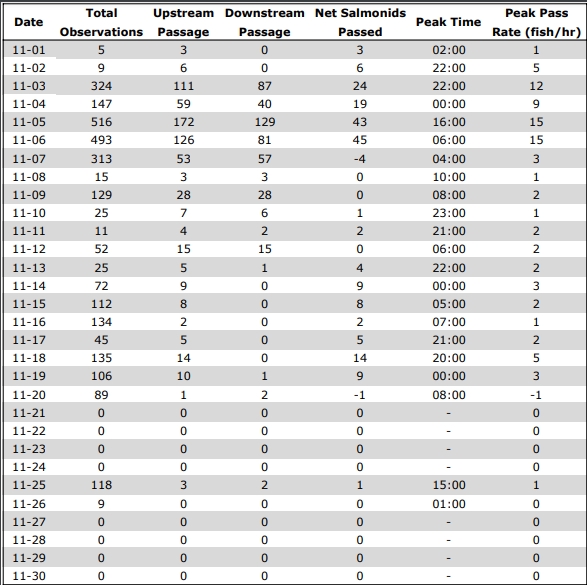Upstream Passage of Walleye
In September 1999 and April 2002, Biotactic Inc. was contracted by The Dow Chemical Company to examine a vertical-slot fishway on the Tittabawassee River, in Midland, Michigan. The objective of the study was to evaluate the potential for improved walleye (Sander vitreus) passage, while minimizing the transfer of sea lampreys (Petromyzon marinus) through the fishway. Several recommendations were developed including temporal management strategies to improve walleye passage, structural modifications to enhance fish attraction, and a monitoring program to evaluate improvements in fishway efficacy. A significant proportion of springtime migrants will continue past the Dow dam, with the development of a fishway that effectively passes walleye. Ultimately, this may help restore natural spawning as well as river resident populations in 180 km (112 miles) throughout the four river systems upstream from the Dow dam.
As many fishways appear to be ineffective for passing walleye, possible reasons for this were investigated using radiotelemetric studies at the Dunnville fishway, on the Grand River. During the spring of 1999, a field study was conducted a the Caledonia dam (upstream from the Dunnville dam), to evaluate several proposed Denil fishway designs, as well as proper fishway placement to ensure maximum passage of walleye.
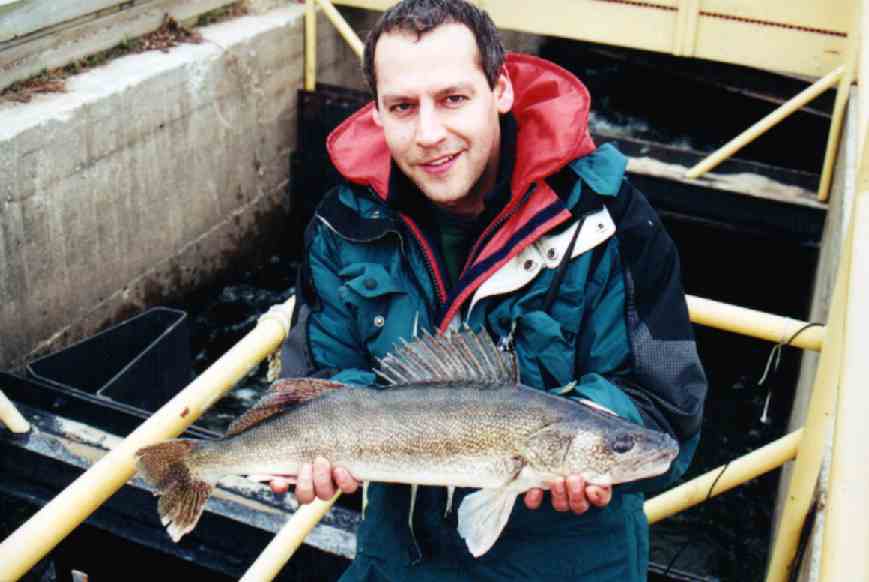
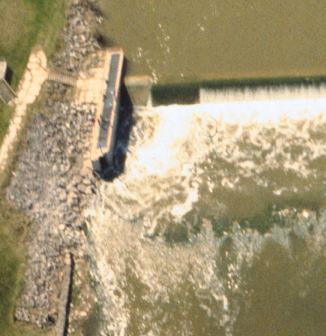
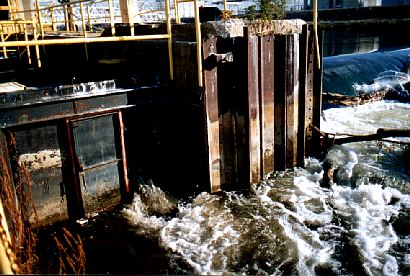
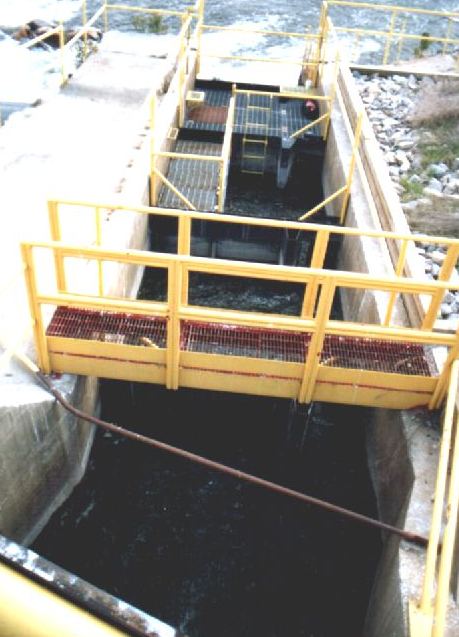
Walleye exiting the fishway after a failed attempt to ascend- Tittabawassee River
Rainbow trout and sucker spp. ascending the fishway- Tittabawassee River



